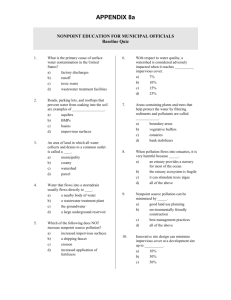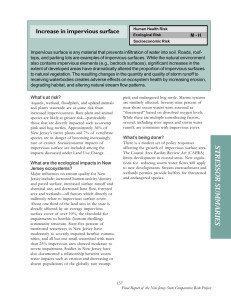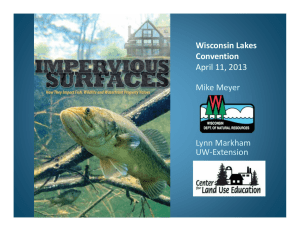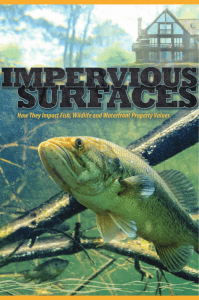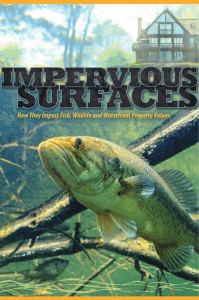2. WILDLIFE
advertisement
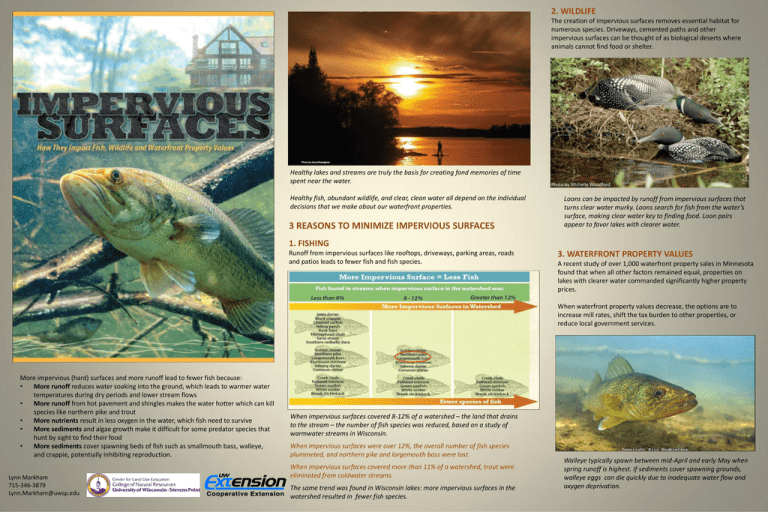
2. WILDLIFE The creation of impervious surfaces removes essential habitat for numerous species. Driveways, cemented paths and other impervious surfaces can be thought of as biological deserts where animals cannot find food or shelter. Healthy lakes and streams are truly the basis for creating fond memories of time spent near the water. Healthy fish, abundant wildlife, and clear, clean water all depend on the individual decisions that we make about our waterfront properties. 3 REASONS TO MINIMIZE IMPERVIOUS SURFACES Photo by Michelle Woodford Loons can be impacted by runoff from impervious surfaces that turns clear water murky. Loons search for fish from the water’s surface, making clear water key to finding food. Loon pairs appear to favor lakes with clearer water. 1. FISHING Runoff from impervious surfaces like rooftops, driveways, parking areas, roads and patios leads to fewer fish and fish species. 3. WATERFRONT PROPERTY VALUES A recent study of over 1,000 waterfront property sales in Minnesota found that when all other factors remained equal, properties on lakes with clearer water commanded significantly higher property prices. When waterfront property values decrease, the options are to increase mill rates, shift the tax burden to other properties, or reduce local government services. More impervious (hard) surfaces and more runoff lead to fewer fish because: • More runoff reduces water soaking into the ground, which leads to warmer water temperatures during dry periods and lower stream flows • More runoff from hot pavement and shingles makes the water hotter which can kill species like northern pike and trout • More nutrients result in less oxygen in the water, which fish need to survive • More sediments and algae growth make it difficult for some predator species that hunt by sight to find their food • More sediments cover spawning beds of fish such as smallmouth bass, walleye, and crappie, potentially inhibiting reproduction. Lynn Markham 715-346-3879 Lynn.Markham@uwsp.edu When impervious surfaces covered 8-12% of a watershed – the land that drains to the stream – the number of fish species was reduced, based on a study of warmwater streams in Wisconsin. When impervious surfaces were over 12%, the overall number of fish species plummeted, and northern pike and largemouth bass were lost. When impervious surfaces covered more than 11% of a watershed, trout were eliminated from coldwater streams. The same trend was found in Wisconsin lakes: more impervious surfaces in the watershed resulted in fewer fish species. Walleye typically spawn between mid-April and early May when spring runoff is highest. If sediments cover spawning grounds, walleye eggs can die quickly due to inadequate water flow and oxygen deprivation.
